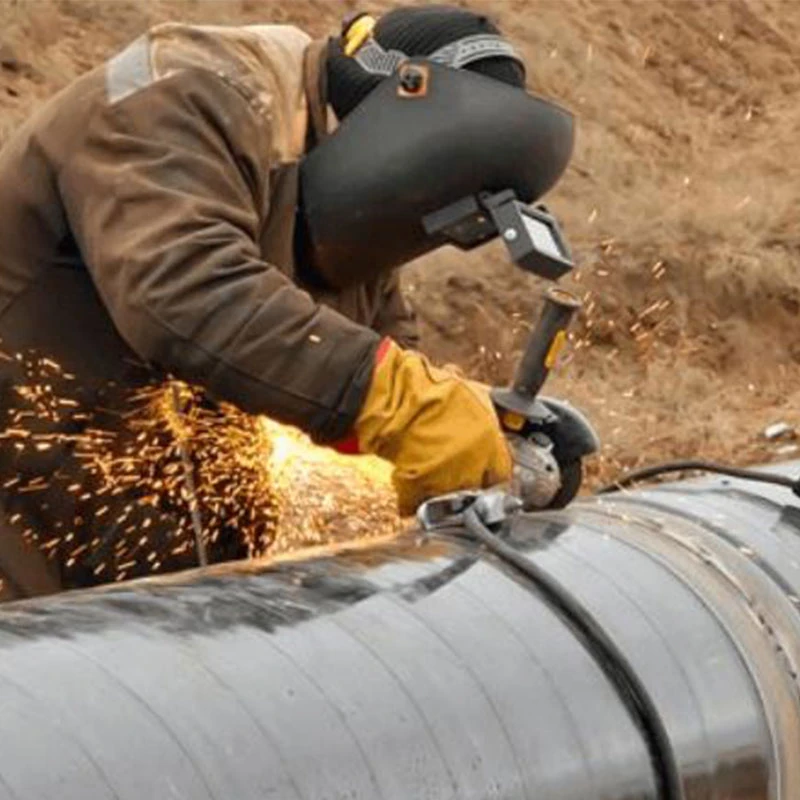-
Cangzhou Yulong Steel Co., Ltd.
-
Phone:
+86 13303177267 -
Email:
admin@ylsteelfittings.com
- English
- Arabic
- Italian
- Spanish
- Portuguese
- German
- kazakh
- Persian
- Greek
- French
- Russian
- Polish
- Thai
- Indonesian
- Vietnamese
- Zulu
- Korean
- Uzbek
- Hindi
- Serbian
- Malay
- Ukrainian
- Gujarati
- Haitian Creole
- hausa
- hawaiian
- Hebrew
- Miao
- Hungarian
- Icelandic
- igbo
- irish
- Japanese
- Javanese
- Kannada
- Khmer
- Rwandese
- Afrikaans
- Albanian
- Amharic
- Armenian
- Azerbaijani
- Basque
- Belarusian
- Bengali
- Bosnian
- Bulgarian
- Catalan
- Cebuano
- China
- China (Taiwan)
- Corsican
- Croatian
- Czech
- Danish
- Esperanto
- Estonian
- Finnish
- Frisian
- Galician
- Georgian
- Kurdish
- Kyrgyz
- Lao
- Latin
- Latvian
- Lithuanian
- Luxembourgish
- Macedonian
- Malgashi
- Malayalam
- Maltese
- Maori
- Marathi
- Mongolian
- Myanmar
- Nepali
- Norwegian
- Norwegian
- Occitan
- Pashto
- Dutch
- Punjabi
- Romanian
- Samoan
- Scottish Gaelic
- Sesotho
- Shona
- Sindhi
- Sinhala
- Slovak
- Slovenian
- Somali
- Sundanese
- Swahili
- Swedish
- Tagalog
- Tajik
- Tamil
- Tatar
- Telugu
- Turkish
- Turkmen
- Urdu
- Uighur
- Welsh
- Bantu
- Yiddish
- Yoruba

Dec . 22, 2024 20:06 Back to list
puddle flange price
Understanding Puddle Flange Prices A Comprehensive Guide
When it comes to the construction and utility industries, puddle flanges play a critical role in ensuring the integrity of various infrastructures, particularly in terms of sealing and supporting pipes that penetrate through walls, floors, and ceilings. This specialized type of flange is essential for water and wastewater systems, helping to prevent leaks and maintain a secure connection. As the demand for effective piping solutions rises, it’s important for project managers and procurement officers to understand the factors that influence puddle flange prices.
What is a Puddle Flange?
A puddle flange is a type of flange attached to a pipe that passes through a concrete wall or slab. It serves to create a watertight seal around the pipe, preventing water ingress or egress. Typically, puddle flanges are integrated into wastewater treatment plants, stormwater systems, and any application where pipes need to penetrate a barrier that is exposed to fluids. The flange itself is usually cast in concrete, providing a sturdy and stable connection point for the pipe.
Factors Influencing Puddle Flange Prices
1. Material Composition The type of material used in the construction of puddle flanges significantly affects pricing. Common materials include stainless steel, ductile iron, carbon steel, and PVC. Stainless steel flanges, while more expensive, offer greater resistance to corrosion and can be crucial in harsh environments.
2. Size and Specifications Puddle flanges come in various sizes to accommodate different diameter pipes. Larger flanges typically cost more due to the increased amount of material and the complexities involved in manufacturing. Custom specifications, such as additional strength requirements or unique dimensions, can further drive up costs.
3. Manufacturing Processes The method used to manufacture puddle flanges can influence their price. Flanges produced through advanced manufacturing techniques or with enhanced tolerances may command higher prices. Processes such as casting, machining, and welding can create significant variances in cost, depending on the intricacy and precision required.
4. Market Demand Like any commodity, the price of puddle flanges can fluctuate based on market demand. Increased construction activities or infrastructure improvements often heighten demand, leading to higher prices. Conversely, a decrease in demand can lead to more competitive pricing.
puddle flange price

5. Supply Chain Factors The locations of production facilities, shipping costs, material availability, and global economic conditions can also impact puddle flange prices. Import tariffs or restrictions can affect prices significantly, particularly for flanges sourced from international manufacturers.
6. Standardization and Certification Puddle flanges that comply with industry standards or possess specific certifications may be priced higher due to the assurance of quality and durability. Standardized flanges may be cheaper but may not offer the same performance guarantees.
Average Pricing Ranges
While the exact pricing for puddle flanges can vary widely based on the factors mentioned above, prices generally fall within a specific range. For standard sizes made from common materials, prices can start as low as $50 and reach upwards of $300 or more for larger or specialized types. It’s crucial to request quotes from multiple suppliers to ensure you are obtaining the best possible price.
Why Choose the Right Supplier?
Choosing the right supplier for puddle flanges is paramount not only for financial considerations but also for product quality and reliability. Suppliers with a strong reputation are more likely to provide durable, high-quality components that ensure the long-term success of your projects. Additionally, robust customer support can help address potential issues that arise during installation or use.
Conclusion
In summary, understanding puddle flange prices is essential for those in the construction and utility industries. By considering factors such as material composition, size, manufacturing processes, market demand, supply chain logistics, and standardization, stakeholders can make more informed purchasing decisions. Ultimately, investing wisely in puddle flanges can lead to safer, more reliable infrastructure projects, contributing to the overall efficiency of water and wastewater management systems. As always, thorough research and strategic planning are key to optimizing costs while ensuring quality.
Latest news
-
ANSI 150P SS304 SO FLANGE
NewsFeb.14,2025
-
ASTM A333GR6 STEEL PIPE
NewsJan.20,2025
-
ANSI B16.5 WELDING NECK FLANGE
NewsJan.15,2026
-
ANSI B16.5 SLIP-ON FLANGE
NewsApr.19,2024
-
SABS 1123 FLANGE
NewsJan.15,2025
-
DIN86044 PLATE FLANGE
NewsApr.19,2024
-
DIN2527 BLIND FLANGE
NewsApr.12,2024
-
JIS B2311 Butt-Welding Fittings LR/SR 45°/90° /180°Seamless/Weld
NewsApr.23,2024











